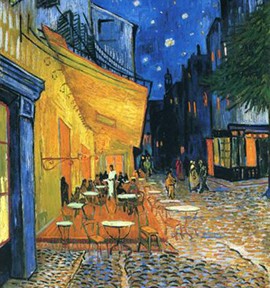Impressionism is an art movement in French painting and the first movement in Modern art. It is originated with a group of Paris-based artists. Impressionist painting characteristics include relatively small, thin, yet visible brush strokes. The style of painting developed in the last third of the 19th century, characterized chiefly by short brush strokes of bright colors in immediate juxtaposition to represent the effect of light on objects.
Key Impressionist Painters:
- Claude Monet | Complete Works
- Auguste Renoir | Complete Works
- Edgar Degas | Complete Works
- Edouard Manet | Complete Works
- Camille Pissarro | Complete Works

Post-impressionism was an art movement in France that represented an extension of Impressionism. It encompasses a wide range of distinct artistic styles that all share the common motivation of responding to the Impressionist movement. Post-Impressionists extended Impressionism while rejecting its limitations. They continued using brilliant and vivid colors, often thick application of paint, and real-life subject matter, but they were more inclined to emphasize geometric forms, to distort form for expressive effect, and to use unnatural or arbitrary color.
Post-Impressionism is the root of modern art. The work of these painters formed a basis for several contemporary trends and for early 20th-century modernism.
Key Post-impressionist Painters

